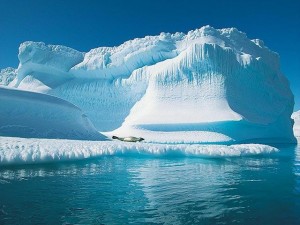Interesting facts - atmosphere
Gravity holds the atmosphere close to the Earth like a blanket in our body. About 99% of the atmosphere is made up of oxygen and nitrogen. The remainder is made up of argon, carbon dioxide and very small amounts of hydrogen, ozone, methane, carbon monoxide, helium, neon, krypton and xenon. The mixture of gases in the atmosphere has taken over 4.5 billion years to evolve. The thin blanket of atmosphere that surrounds the Earth contains all of the essential ingredients needed to sustain life on our planet—air, water, nutrients, and heat.
Visualized phenomenon that happen in atmosphere
Auroras.
The dancing fluorescent ribbons that light up the night sky
Aurora Borealis(in north) /Aurora Australis(in south), a luminous atmospheric phenomenon that generally appear as bright colorful bands of light commonly referred to as the southern and northern lights, occur in the ionosphere. Auroras are often visible in the night sky in both the northern and southern regions of the Earth. The aurora was named after the Roman goddess of dawn, and was long thought to be produced by sunlight reflected from polar snow and ice, or refracted light much like rainbows. Auroras are caused by high energy particles from the solar wind that is trapped in the Earth's magnetic field . As these particles spiral back and forth along the magnetic field lines, they come down into the atmosphere near the north and south magnetic poles where the magnetic field lines disappear into the body of the Earth. The delicate colors are caused by energetic electrons colliding with oxygen and nitrogen molecules in the atmosphere. This excites the molecules, and when they decay from the excited states they emit the light that we see in the aurora.
A meteor shower
The upper air burst into life!
And a hundred fire-flags sheen,
To and fro they were hurried about!
And to and fro, and in and out,
The wan stars danced between
These meteors are small fragments of cosmic debris entering Earth's atmosphere at extremely high speed, leaving a streak of light. Most of the small fragments of cosmic debris are smaller than a grain of sand, so almost all fragments are burnt up and never hit the earth's surface. The intense heat vaporizes most meteors while entering atmosphere, the visibility of such event occurred at around 60 miles up is called “shooting stars”. Some large meteors splatter, causing a brighter flash like a fireball with an explosion, which can often be heard up to 30 miles, with the falling of debris is called “meteor storm”. Fragments from these explosions which do contact earth's surface are called meteorites.
Rainbow
“Play with Rainbow, wear the Rainbow
Ride the Rainbow high and low
Spread the color of Rainbow wherever you go”
The spectacular color show of curved white light spectrum that forms when light is reflected and refracted by the rain drops in the sky. Here the rain drops act as a tiny prism splits the light into separate colors of spectrum.
These kinds of drama in the atmosphere as a stage show which lit up even soar spirits, is certainly a gift of nature.






























